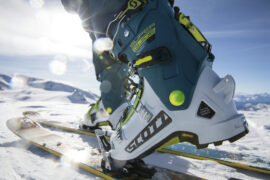We are often asked if it is possible to change bindings on your skis and the short answer is usually yes.
There are some caveats though and sometimes it isn’t possible to swap to a particular binding for a particular boot size, occasionally the design of the ski can be a problem too so we’ve written a short article to explain what to look out for.
There’s plenty of reasons why you might want to change the bindings on your skis. You may be wanting to replace an alpine binding with a touring binding, or update an old frame binding to a lightweight pin tech binding but it’s very important that the new binding is secured safely.
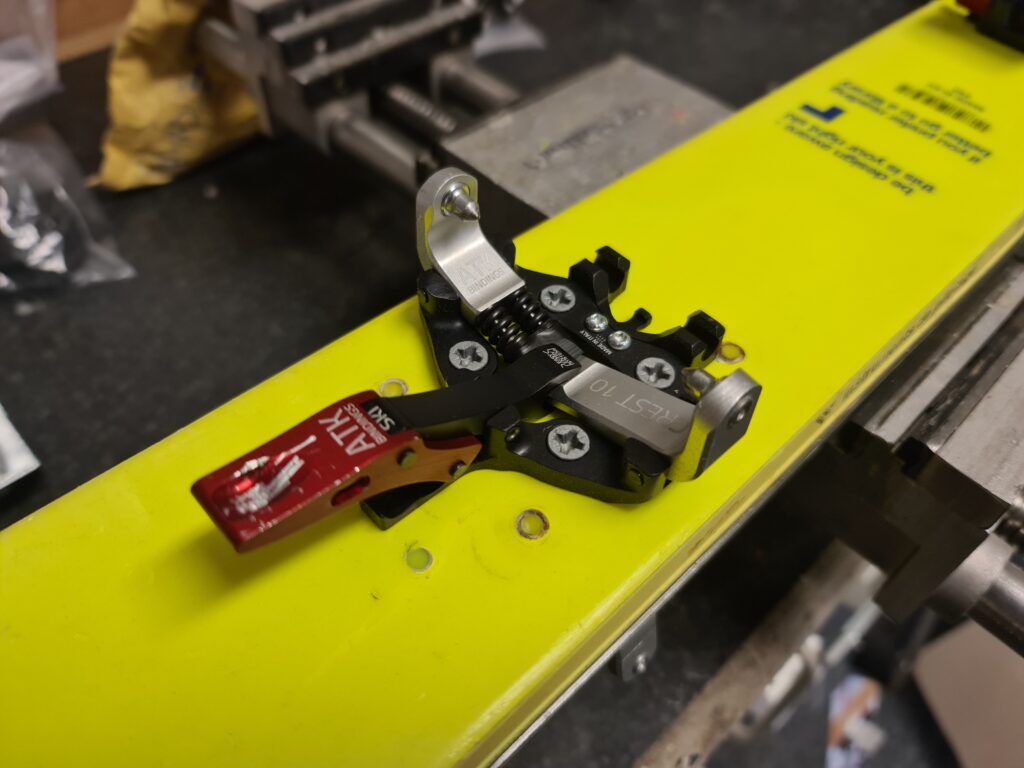
Make sure there is safe separation of holes.
The basic rule of thumb is that you need to have at least 5mm between he edges of the old holes and the edges of the new holes. This will give the new screw holes the strength they need to withstand the stresses of skiing. Any less than 5mm clear deck and you run risk of the screw ripping out during use which usually doesn’t end well.
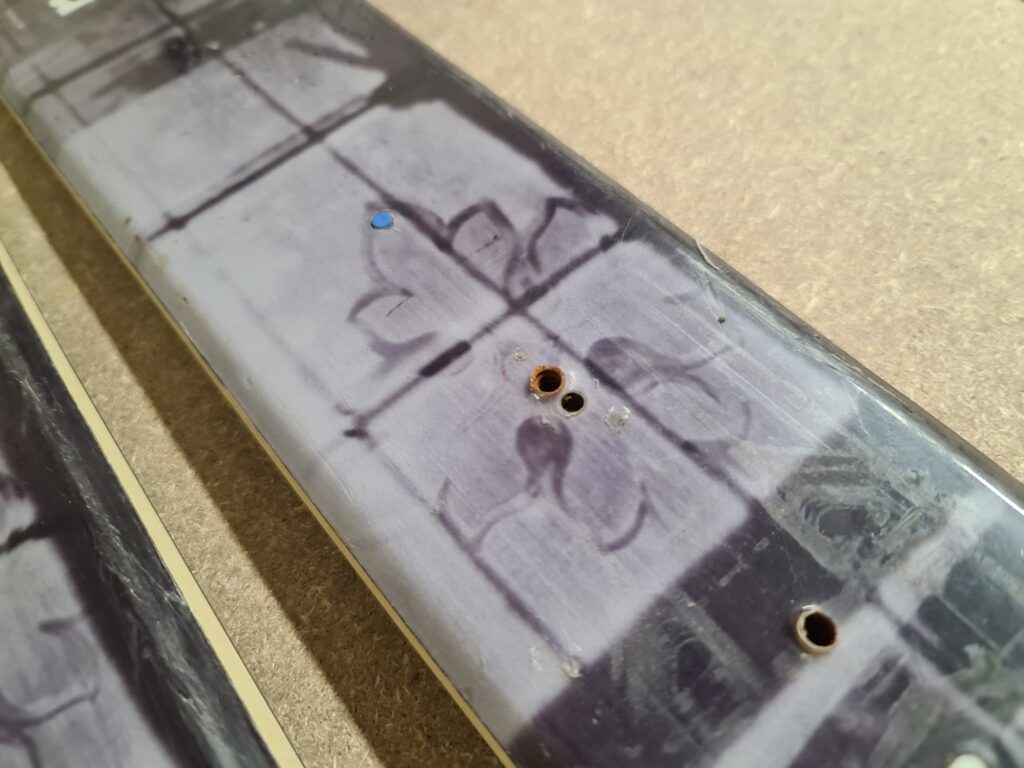
Given that we need that to have this minimum separation of the holes, whether you can change to any given new binding will depend on the positions of the old holes and the position of the new holes. This depends on the model of the bindings and the size of boots that they were mounted for.
Sometimes this means that the new binding need to be moved slightly in order to get a good fix or sometimes you may need to choose a binding with a different mounting pattern in order for it to clear the old holes.
If you move the bindings position (particularly the toe piece) then you will change where your weight acts on the ski, a few mm one way or another are not usually a problem but if you are centimetres out then it will affect the way a ski feels, usually for the worse. If the toe piece holes are safe but the heel piece holes clash then we can sometimes use the adjustment range of the binding to move the heel holes without changing the position of the boot on the ski, but this will only work as far as the heel adjustment range allows.
If there are clashes everywhere then you are usually best to try with a few different bindings hole patterns to see whether there is a pattern that works better. It is actually quite rare to need to do this though.
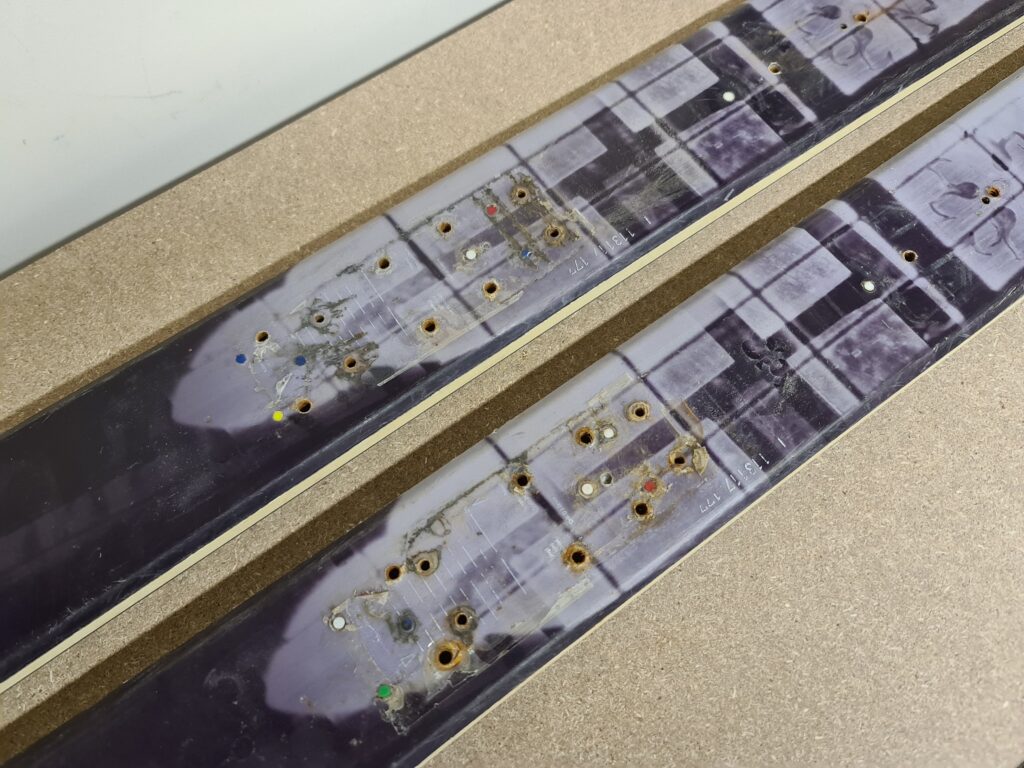
Plug the old holes to seal them.
Once you have drilled the new holes you need to properly seal the old ones with plastic dowels and glue. this will stop water ingress into the ski which rots the wood core.
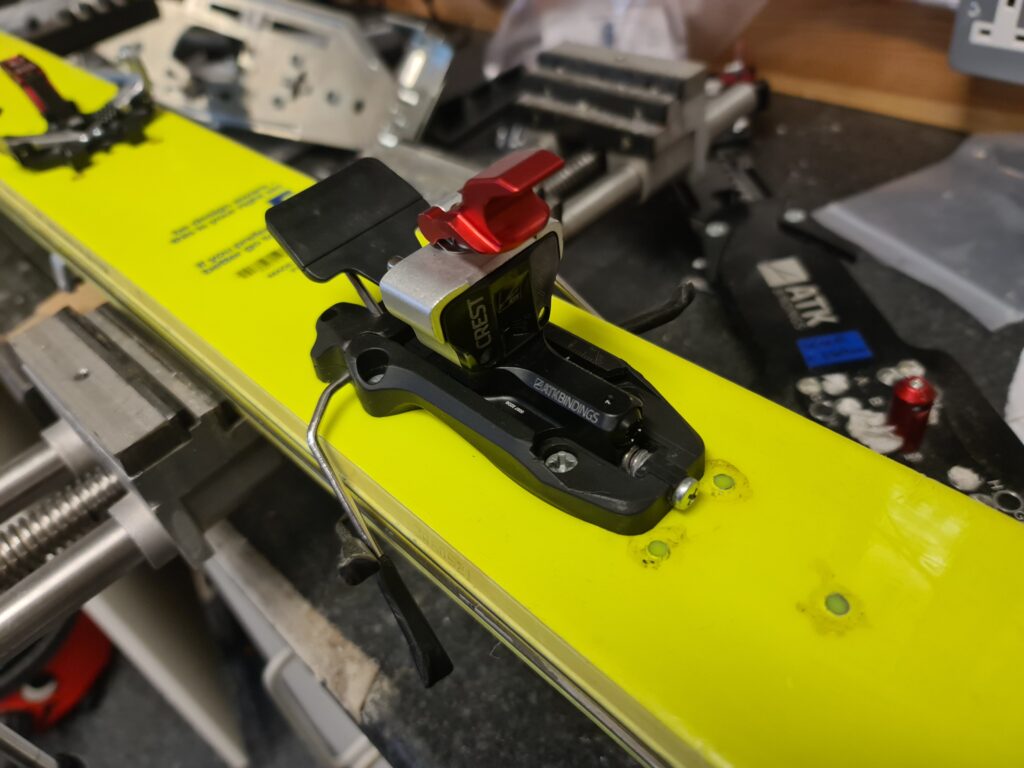
The skis need a flat deck / top sheet.
One major barrier to changing bindings is if the skis don’t have a flat deck / top sheet. This is most often found when skis have been sold with a fitted binding on a rail system, usually on Alpine downhill skis. The rail allows the bindings to be adjusted for different boot sizes but these rails are often integrated with the ski deck which may have raised mouldings around the rail. If the ski deck isn’t flat in the mounting area then you can’t mount a new binding on there. Another think to look out for is if the ski has had a rail on it from new then you can’t guarantee that it meets the industry standard mounting area Reinforcement (G1), it may have only been reinforced where it needed to be for the rail system.








